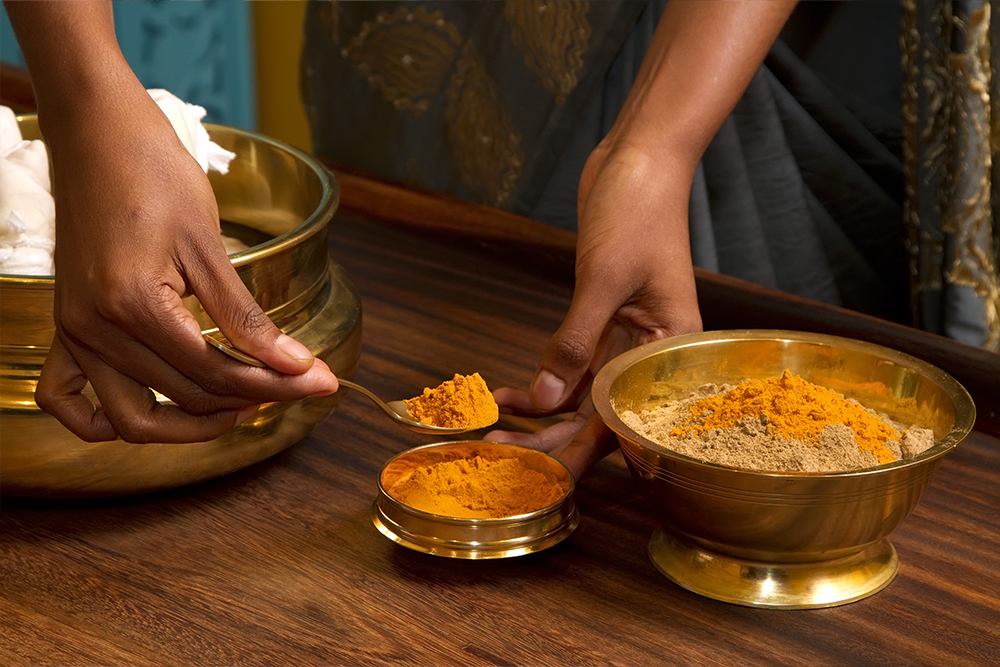
26 May Balancing Doshas through Ayurvedic Cooking
In the pursuit of optimal well-being, Ayurveda, the ancient Indian system of medicine, offers a holistic approach that encompasses various aspects of our lives. One such aspect is Ayurvedic cooking, which goes beyond mere sustenance and aims to balance the doshas, the three fundamental energies believed to govern our physical and mental health. By understanding the principles of Ayurvedic cooking and incorporating them into our daily lives, we can embark on a journey towards achieving harmony and optimal well-being.
Understanding Ayurvedic Cooking and the DoshasAyurvedic cooking is more than just preparing and consuming food; it is an art that combines knowledge of ingredients, cooking techniques, and mindful eating practices. At the core of Ayurvedic cooking lies the concept of doshas—Vata, Pitta, and Kapha—representing the elemental energies that exist within each of us.Vata, associated with the elements of air and space, governs movement and communication. Pitta, associated with fire and water, governs digestion and metabolism. Kapha, associated with earth and water, governs stability and structure. Each person has a unique combination of these doshas, known as their prakruti, which determines their physical and mental characteristics.
Balancing Doshas through Ayurvedic CookingAyurvedic cooking focuses on achieving a harmonious balance of the doshas within our bodies. By choosing foods and cooking methods that pacify or enhance specific doshas, we can restore balance and promote well-being. Here are some guidelines for balancing each dosha through Ayurvedic cooking:
Balancing Vata DoshaVata dosha tends to be cold, dry, and light. To balance it, opt for warm, nourishing foods such as soups, stews, and cooked grains. Incorporate grounding ingredients like root vegetables, ghee, and warming spices such as ginger and cinnamon. Avoid excessive intake of raw or cold foods.
Balancing Pitta DoshaPitta dosha is associated with heat and intensity. To balance it, focus on cooling foods such as fresh fruits, leafy greens, and cucumber. Emphasise sweet, bitter, and astringent tastes and reduce intake of spicy and oily foods. Favour gentle cooking methods like steaming and sautéing over deep-frying.
Balancing Kapha DoshaKapha dosha tends to be heavy, moist, and cool. To balance it, choose light and warming foods such as legumes, light grains, and pungent spices like cayenne and black pepper. Emphasise steaming, baking, and grilling over heavy frying. Minimise consumption of dairy products and opt for lighter alternatives.
Mindful Eating PracticesIn addition to the choice of ingredients and cooking techniques, Ayurvedic cooking places great importance on mindful eating practices. Eating in a calm and peaceful environment, chewing food thoroughly, and savouring each bite helps in proper digestion and assimilation of nutrients. It is also beneficial to eat according to your body’s natural hunger and fullness cues.Ayurvedic cooking offers a powerful tool for achieving balance and optimal well-being by harmonising the doshas within us. By understanding our unique prakruti and incorporating Ayurvedic principles into our cooking and eating habits, we can support our physical and mental health. So, embark on this flavorful journey of Ayurvedic cooking and discover the path to a balanced and nourished self.



No Comments